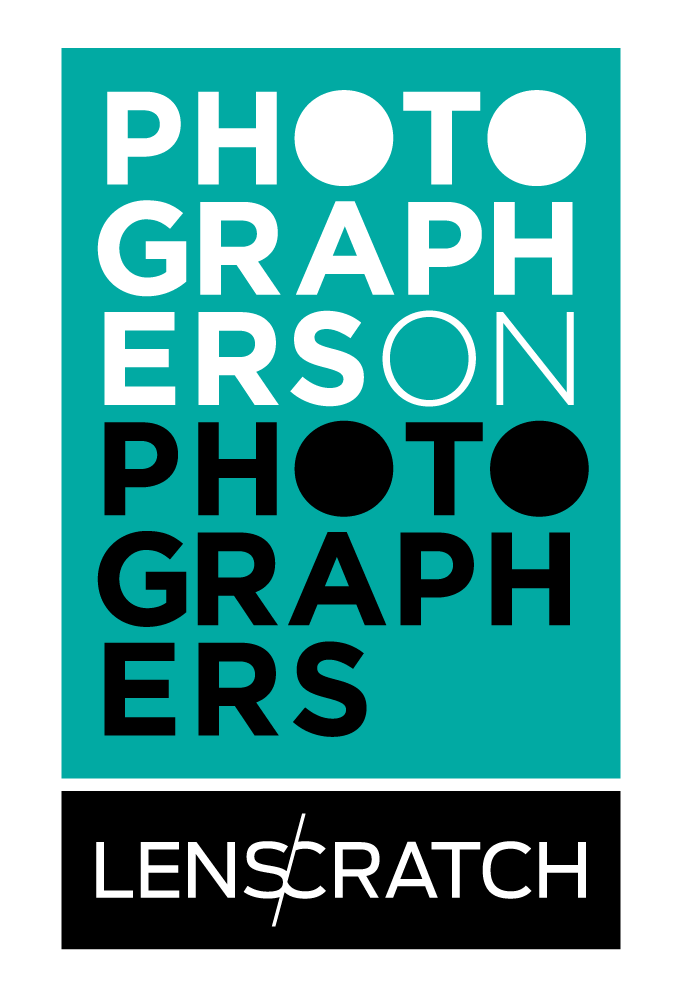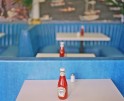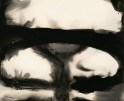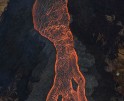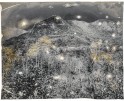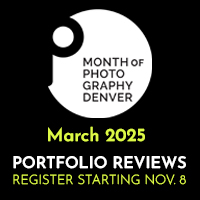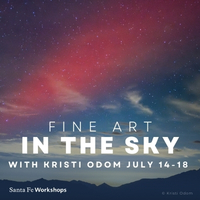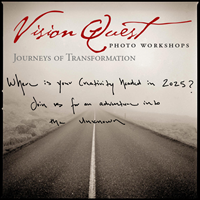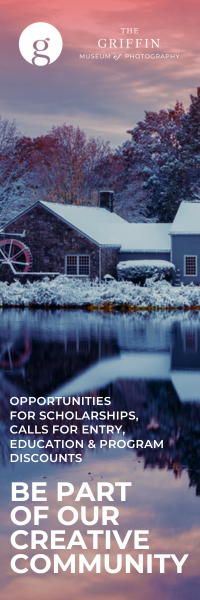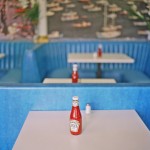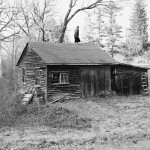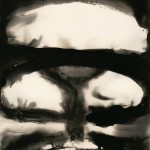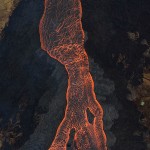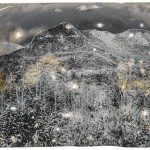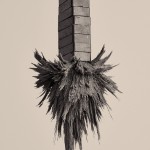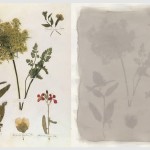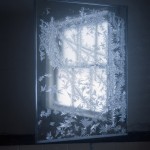Photographers on Photographers: R. J. Kern on Stuart Klipper
For the entire month of August, photographers will be interviewing photographers–sharing image makers who have inspired them, who they are curious about, whose work has impacted them in some way. I am so grateful to all the participants for their efforts, talents, and time. -Aline Smithson
I selected Stuart Klipper as my guest for this interview for four main reasons. First, he’s darn good example of an accomplished, working photographer still as passionate about photography since he was a kid. He’s constantly shooting and sharing work. He’s a photoholic, in a really good way. Secondly, he’s rather opinionated and I usually learn quite a bit from his expansive vocabulary, too. Third, he loves kids and our kids see him frequently calling him, “Uncle Stinky.” Finally, he’s also the only person I know with a house painted in Kodak gold color. We can all learn something from Stuart and I feel his work is important to share.
Stuart Klipper was born in The Bronx in 1941. He moved to Minneapolis in 1970. He has gone Antarctica six times to photograph; in 1987, as a participant in a private sailing expedition; the other times with the National Science Foundation’s Antarctic Artists and Writers Program. He has also worked in the Arctic; in Greenland, Iceland, Svalbard, Franz Josef Land, Alaska, and Lapland. In 2009 he became one of only c.400 people to have stood at both Poles.
Some other travels have taken him across the Aboriginal Outback of Northern Australia, the Biblical deserts of Israel and Sinai, the tropical rain forests of Costa Rica, the far reaches of Patagonia and Tierra del Fuego in Chile and Argentina. He has voyaged widely on all of the Earth’s oceans. For over 40 years he has made photographs in all 50 states, distilling and crystallizing the defining characteristics of American regions. He has also photographed extensively in the First World War cemeteries and memorials of the Western Front; and, likewise in major physics and astronomical research installations throughout the US.
His photographs have been widely exhibited in, and collected by, major museums both nationally and internationally; foremost amongst them are the Museum of Modern Art, the San Francisco Museum of Modern Art, The Art Institute of Chicago, The Minneapolis Institute of Arts, the Walker Art Center, The Jewish Museum (NYC).
He has been the recipient of many major grants and fellowships including two each from the Guggenheim Foundation and the Bush Foundation, and three each from the McKnight Foundation, the Minn. State Arts Board, and the Jerome Foundation.
He has been the recipient of the US Navy’s Antarctic Service Medal.
R. J. Kern (b. 1978) is an American artist whose work explores ideas of home, ancestry, and the sense of place. He uses the photographic medium in multiple formats, utilizing both natural and artificial light to document the interaction of people, animals, and cultural landscape.
His work has been exhibited in a number of notable exhibitions, including at the Museum of Modern Art (Tbilisi, Georgia), National Portrait Gallery (London, UK) and the Yixian International Photography Festival (Anhui, China) among others.Awards and accolades include PDN’s 30 2018, CENTER 2017 Choice Award Winner, Curator’s Choice (First Place), the 2017 TAYLOR WESSING Photographic Portrait Prize (Finalist), and is the recipient of two Artist Initiative Grants from the Minnesota State Arts Board (2016, 2018).
Kern’s work has been presented in a number of publications, including a feature in National Geographic (November 2017), with his series The Unchosen Ones and Out To Pasture. In 2018, Kern published his first monograph with Kehrer Verlag titled, The Sheep and the Goats. Public collections holding his work include Center for Creative Photography, The Griffin Museum of Photography, the Plains Art Museum, and the Museum of Fine Arts, Houston. He is represented by the Klompching Gallery in New York. He lives and works in Minneapolis, Minnesota.
R. J. Kern: Tell us about your growing up and what brought you to photography?
Stuart Klipper: As a kid in the Bronx the lens end of a folding Kodak was, more often than not, angled my way. I think my father had to have photographed just about every aspect of my childhood. So, its thanks to him, that photography has been before me back to my bassinette days.
My own first camera was acquired via a Wheaties box top and 25¢, plus a 3¢ stamp. It was a little plastic one, Bakerlite perhaps. The exposed film was brought to the corner drug store for processing -. The prints when picked up were kept; not the negatives.
My first real camera was a Rolleicord. I bought it with my Bar Mtizvah gelt.
My junior high homeroom teacher, Mr. Kaplan, ran the photo club. I was a member. Mr. Kaplan introduced me to the darkroom, and its magic. That magic has never waned.
Photography was one of a panoply of my boyhood hobbies. It was the one that stuck. Most of the other ones, in one way or another, helped to inform much of what I have engaged with in my art over the course of my life.
I did actually take some photography courses. They were taken at the Univ. of Michigan for a year; this was after I received my BA. This is about it for my formal study of the medium. But, I did hang around the art school there, and was the darkroom monitor during the next year. My two professors were extraordinary, each in quite a different way from the other. Their influence on me then was pivotal; as was their approval and encouragement.
By then the die was pretty much cast as far as being a photography goes; though, I have never been truly sure of what to identify myself as; and, being concretely certain of what it is I have been doing has been similarly immaterial. No matter, serious photography has been my life from then on in.
R. J. K.: What were and are some of your major influences?
SK: Major influences? I couldn’t draw a bead on any single one if my life depended on it; my influences are myriad and disparate. I’ve long held that, for me, photography hovers nebulously somewheres between a visual art and philosophical inquiry. Hence, I’d have to hold that I have been influenced primarily by my readings in literature, science, and philosophy; music and movies also come into play.
As far as it goes with photographers that have held sway, its pretty much a kaleidoscopic mess: Jackson and O’Sullivan; Atget; Walker Evans and Wright Morris; Edward Weston; Berenice Abbott; and in a more immediate and personal fashion, a few long time friends to boot: Lee Friedlander, Frank Gohlke, and Bob Adams.
R. J. K.: How have you navigated your career?
SK: Navigating is a good word choice, because it brings to mind ‘hazards to navigation’; and really, truly, deeply I no longer do have any solid notions about how one might navigate the cross currents, side eddies, and rapids of the contemporary photography world, the ‘photo-industrial complex’ as I often (I guess, facetiously) call it. I wouldn’t, honestly, even know where to begin.
Its players and its underlying dynamics have radically changed from what I was once modestly familiar with. Over he past coupl’a decades the MFA mills – opps! programs — have inundated the scene with cascades of aspirants seeking to establish themselves ASAP. I suppose I’m skeptical about all of this; but, I’ll happily grant that there are, of course, glorious exceptions amongst the quotidian groundswell.
I have many younger — and some no longer so much so — friends and colleagues who are intractably dedicated to their art and vision, and who make incredibly fine work. Many of them, still barely, if at all, known or acknowledged; to my mind, very sadly so. I do get asked about how best to go about attaining some modicum of acceptance and recognition; and, about how best to avert or surmount their straits and barriers, and their frustrations.. Apart from making a personal connection or two for them, I am at a total loss and what to advise them — this to the point of perplexity and worry.
Me to me at 30? – what would I whisper in my ear? Maybe this, Stay in New York and get a completely different type of personality; and maybe too, come into some real money early in life. Good luck with that.
Or perhaps, wind up nearly by chance in a decent and art oriented city like Minneapolis, and become friends with others in is small photo scene.
And, underneath all, just keep doing your work and figure out how to continue on doing it no matter what; which is what I have, hook or crook, managed to somehow do.
R. J. K.: Tell us about your process…
SK: When it comes to my thought process – for want of a better term, I was making photos for quite some while when I finally gave my noggin a dope slap and said, D’oh! I can think about what I’m doing too. And, I have indeed thought a lot about whatall it is that I do for a long time now, and in some depth.
But really, I finally only recently realized that it all just basically boils down to this: I go out. I look around. And, I see what’s there.
It all is essentially just about finding what is out in the world; and, how we can get a handle on it, and in turn feel about what we might have come to know.
Nothing is, in and of itself, more important or special than anything else. I take everything in equally, and with an element of equanimity.
Anything can be photographed well.
R. J. K.: Can you share about your collections?
SK: Visitors to my house for the first time, or even often for the nth time, are invariably taken aback by the sheer density of stuff around the place; there is scant real estate, vertical or horizontal (ceilings excluded, mostly), that isn’t fully laden. My DC (Darlin’ Companion) has christened my house as The Klippersonian. I do kind’a-sort’a live in a museum; so does my cat.
On its walls, yes, mostly photos – I’d estimate that maybe 80% acquired by trade with colleagues; a few gifts to boot. But period posters and paintings are peppered about too — landscapes made by friends who concentrate on this part of the country (also trades).
Extensive ethnographic and natural history collections on site too. Most of which garnered over the course of my travels. And, I’ve long fueled a passion for the indigenous North American cultures of the Southwest, the Great Plains, and the Arctic; hence, oodles of such cultures’ items abound – ceramics, weavings, carvings, and jewelry.
I can’t rightly say I ever choose what to look at on a regular basis; its probably more on the order of the other way around. But, something or another can always pop to the fore unexpectedly, and charm me anew. Also visitor might alight on something in particular, and ask me to expound.
But here is one way I do make deliberate choices. I volunteer at a nearby elementary school, and regularly select a bunch of related pieces to bring in to tell the kiddos there about another culture, or something about the nature of one of our planet’s remoter precincts. By now the first thing I’m asked when entering a classroom is, Did you bring anything?
R. J. K.: What defines success for you?
SK: The notion of successfulness, per se, has never been noticeably evident in my hierarchy of responses (I’ve dredged that term up from my psych major days).
Setting external goals to serve as milestones of success is something that would ever have occurred to me to do. I always just wanted to make my work whether or not it ever got out into the world.
So, overall, the intrinsic importance of any noteworthy achievement is that it basically just allowed me the wherewithal to get more of my work done.
Guggenheims, and solo shows in major museums, fair enough, were indeed kvell-worthy; and, more than helpful in becoming established. But without question, such recognitions, I always hoped, would indicate to my parents that I had really been doing something with my life.
R. J. K.: What’s next?
SK: I pretty much really have no idea at all.
Ideally, something serendipitous like when unheralded, in 2014, Peter Galassi contacted me about a commission he’d set up for me with a museum for Sweden. “Commission” is a magic word.
So, I wish I could tell you something along the lines of a looming return to Antarctic or Sweden or the Australian Outback; or some of the several parts of the planet that have long been beckoning to me like Siberia, Southern Africa, Hokkaido, &tc. But, alas, the prospect of any of the requisite funding to underwrite such trips doesn’t, realistically, seem likely. Fingers remain crossed.
The known-next is that I always know I’ll continue to make my work in more in propinquitous surrounds. I do have a self-imposed project I soon hope to commence. I’ll be calling it, Thirty-six Views of the US Bank Stadium. This with apologies to Hokusae; that monstrous stadium in lieu of the sublime Fuji.
R. J. K.: And finally, can you describe your perfect day?
SK: Uh oh! That dreaded perfect day conjecture rears its head yet again…
Well, how could I not have had perfect days galore streaming regularly through my little life in the 40s? But, that’s probably not what you’d like me to be getting at.
I know I likely had to have had a few other ones around 1967, and then some additional one again in 1974, or thereabouts. Sorry, I’m not at liberty to divulge details.
Parenthetical: I’ve always taken things as the come along, and play out. The influence of a once-upon-a-time immersion in Zen seems to have allowed for that; that, or setting the stage for my understanding who I already was a long these lines. Thus, singling out any specific peaks pf perfectness might not be in personal grain.
But, on the likelihood any other perfect ones actually ever crop up — though I have no idea whatsoever whatall one might entail, or even if I’d know one when I saw one — you’ll be the first to know; I promise.
Posts on Lenscratch may not be reproduced without the permission of the Lenscratch staff and the photographer.
Recommended
-
The 2024 Lenscratch Staff FavoritesDecember 31st, 2024
-
Interview with Dylan Hausthor: What the Rain Might BringDecember 23rd, 2024
-
elin o’Hara slavick: Art + Science Competition Honorable MentionDecember 21st, 2024
-
Leslie Gleim: Art + Science Competition Honorable MentionDecember 20th, 2024
-
Gesche Wuerfel: Art + Science Competition Honorable MentionDecember 19th, 2024


